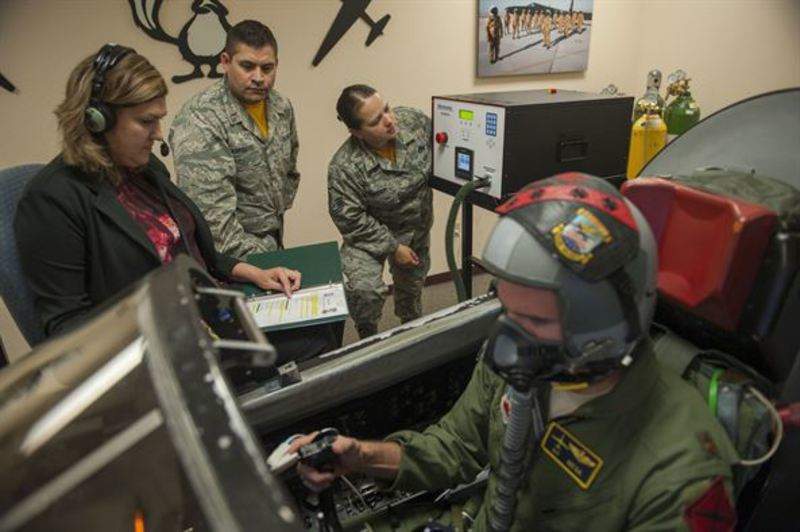
.jpg)
The US Air Force (USAF) has acquired a new device that allows airmen to train more efficiently and safely in simulated environments.
The airforce pilots can now use the reduced oxygen breathing device (ROBD) during their initial aerospace physiology training.
Upon completing initial aerospace physiology training, pilots may have to occasionally go through a refresher course to maintain their flying status.
As part of the course, pilots will work alongside the 9th Physiological Support Squadron (PSPTS) for a variety of reasons, including a hypoxia demonstration.
9th PSPTS support flight chief master sergeant Jennifer Flecker said: “After someone completes the academics portion of their training they have to do a hypoxia demonstration.
“Hypoxia is a state of oxygen deficiency. When a person goes up in attitude and breathes less oxygen they become susceptible to cognition errors, situational awareness errors, loss of coordination, and visual impairment.”
How well do you really know your competitors?
Access the most comprehensive Company Profiles on the market, powered by GlobalData. Save hours of research. Gain competitive edge.

Thank you!
Your download email will arrive shortly
Not ready to buy yet? Download a free sample
We are confident about the unique quality of our Company Profiles. However, we want you to make the most beneficial decision for your business, so we offer a free sample that you can download by submitting the below form
By GlobalDataUsing ROBD instead of the hyperbaric chamber, the pilots will overcome the threats posed by hypoxia through exposing pilots to the conditions, meaning the 9th PSPTS airmen will spend a lot less time and manpower completing hypoxia demonstrations.
9th PSPTS aerospace physiologist technician airman1st Class Mariah Rosenberg said: “A hyperbaric chamber flight takes us about an hour and a half to do the entire thing and with the ROBD it takes us about 30 minutes.”
The ROBD does not require pilots to wear the full pressure suit and allows them to spend more time on the mission as opposed to training.
Flecker added: “The ROBD demonstrates hypoxia without exposing aircrew to altitude threats.
“It takes oxygen, nitrogen, and compressed air and mixes them up to different percentage levels a person would be exposed to at various altitudes.”
Image: The ROBD allows for a more efficient and safer way for pilots to train in simulated environments. Photo: courtesy of the USAF photo by Justin Parsons.



